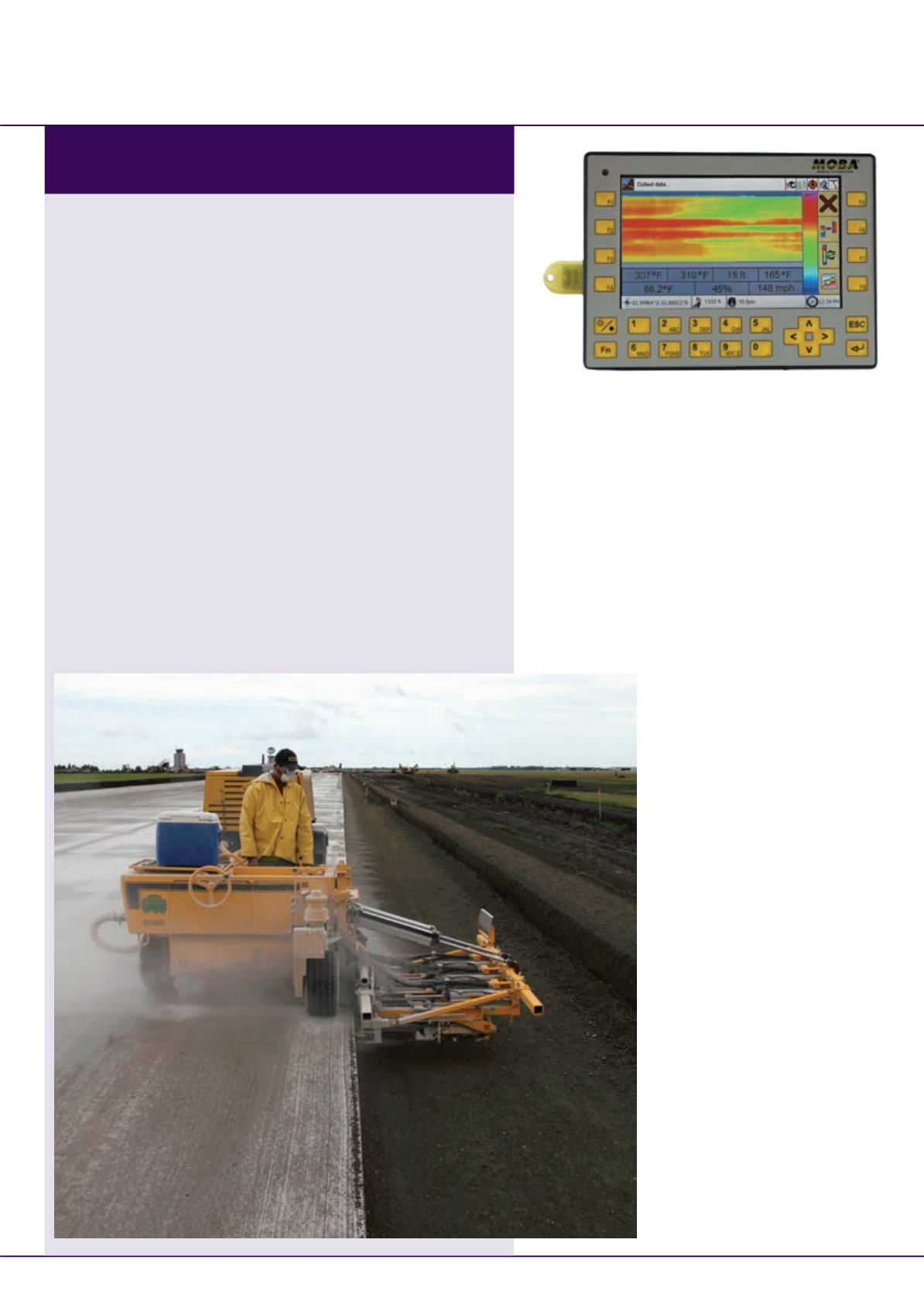
35
november 2014
international
construction
ROADBUILDING
Project pressures
concreteoverlayaspart of the larger reconstructionof 12.5miles
(20.1km) ofHighway30.However,DarrLink’s resurfacingwas
scheduled in themiddle of harvest season, so consideration had
tobe given to the farmerswhose fields bordered it, aswell as the
daily traffic travelling between the twomajor highways.
In order to minimise disruption, Cozad-based contractor
Paulsenpaved its2.38km sectionof the job in twopasses, instead
of a single 7.6mwide pass whichwouldhave blocked the road.
It used a newGOMACO two-trackGP-2400 paver with Leica
Geosystems 3D guidance system. Although the company had
used Leica Geosystems 3D guidance system before on its GP-
2600paver, thiswas the first time for theGP-2400 and its crew.
Dave Neill, concrete paving assistant manager for Paulsen,
said, “When we purchased the system,
we hired two surveyors and they’ve
been a real advantage. Still, we were
pretty cautious on our first pour with
the stringless technology, but it’s pretty
straightforward. If you see the paver
heading towards the ditch, you know
something is wrong, shut it down.
Thankfully, that didn’t happen to us and
once we started using the systemwe saw
somany advantages.
“You don’t have to set any stringline
stakes, which takes a lot of time and
labour. You don’t have finishers hitting
a stringline and that all makes a big
difference.On this project, wherewe had
tomaintain traffic as we poured one lane
at a time, the biggest advantage was we
didn’t need the extra four feet (1.2m) of
offset for the stringline.”
Paving production on the overlay
averaged around 5,000 feet (1,524 m)
per day with very little finishing work
done behind the paver.The job used five
Leica total stations, set up at 300 foot
(91.4 m) intervals, which are more than
is strictly needed, but Paulson believes
the extra instruments help achieve a
higher production rate.
Earthmoving technology
And the use of the latest equipment can
also deliver benefits in the earthmoving
phase of road building, as illustrated
>
Drilling success
Key tips for concrete dowel drills
D
rilling into a concrete road slab to fit dowel barsmay sound like an easy task,
but there are several key steps that are crucial for efficiency, productivity and
safetywhen using specialised pneumatic drills, according to Randy Stevens,
vice president of sales at E-Z Drill.
AIR
- Each gang (drill) will require about 100 cfm (2.8m
3
/minute) of air, so be sure you
have a compressor with enough capacity.
DRILL BITS
- Install the drill bits using the right bit guide bushing and ensure the bit is
the right chuck size for the drill and the right length for the desired depth.
OIL
– Fill the oiler with rock drill oil. Other lubricants are too light and also contain
synthetics that can damage hoses and O-rings.
FEED PRESSURE
– Too high and rotationwill be slow or the drill may stop. Too low
and the drill will bounce off the concrete. Start around 18 to 25 psi (1.2 to 1.7 bar) for
horizontal drilling and 5 to 9 psi (0.3 to 0.6 bar) for vertical drilling. Each drill will need
separate adjustment onmulti-gang drills.
SAFETY
–Wear proper work attire including ear protection, safety glasses and
hardhats. Dust masks are critical and consider a dust collection or suppression kit for
your drill to reduce hazards associatedwith poor visibility. Drilling concrete creates a
lot of dust!
Compressed air can also cause serious injuries. Shut off the air supply and bleed the
line beforemoving or disconnecting air hoses or dissembling the drill.
Be aware of pinch points on the drills that can harm fingers, hands or limbs.
KEEP IT CLEAN
– A concrete drill accumulates a lot of dust, so at the end of each
workday use your air compressor to blow it off. Regularly cleaning your drill will prevent
clogging and excessive dust build-up. If it rains, any dust that has accumulated on a
drill that hasn’t been cleanedwill quickly harden to concretewhen it dries, which can
be very hard to remove.
Systems such asMoba’s Pave-IRmodule can be used to log
and document asphalt temperatures as thematerial is laid.


